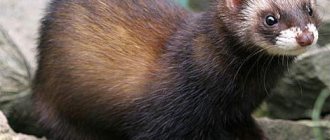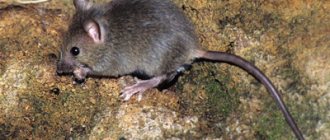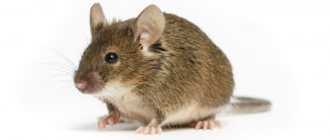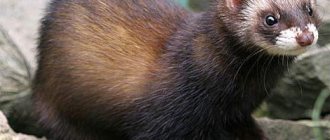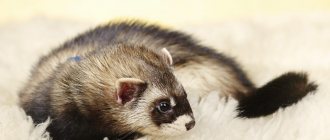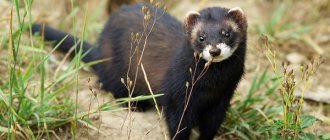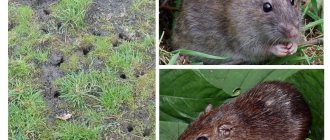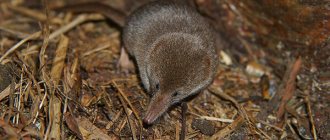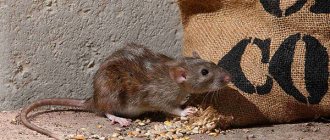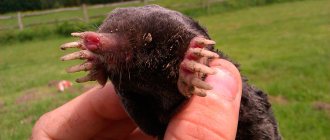23 January77648various animalsinsectivores
The common hedgehog or European hedgehog is an animal from the Hedgehog family, which is a representative of the order Insectivores. The common hedgehog has been familiar to us since childhood. The pages of children's books introduced us to this sweet and kind animal. In this article you will find a description and photo of the common hedgehog and learn a lot about this brave little guy.
Description of an ordinary hedgehog
The ordinary hedgehog is small in size: body length 20-30 cm, tail length up to 3 cm, weight 700-800 g. Ears are small, up to 3.5 cm (larger in the subspecies that lives in Cyprus). The muzzle is elongated. The nose is pointed and constantly wet. There are 20 small sharp teeth on the upper jaw, and 16 on the lower jaw. The head is large, wedge-shaped, slightly elongated. Paws with five fingers and sharp claws. The hind legs are longer than the front legs. The needles are short, up to 3 cm in length, smooth. A “parting” separates them on the head. The color is striped, brown and light. Inside the needles are hollow, with air. Between them are thin, long, sparse hairs. They are dark on the head and belly. An adult hedgehog usually has 5000-6000 spines, and juveniles have up to 3000. The color of the face, belly and paws is yellowish-white or dark brown. The breast and throat are plain, without spots.
Feeding features of the common hedgehog
— Advertising —
The common hedgehog is an omnivore. It feeds on adult insects, including harmful ones (chafer beetle, hairy ground beetle, nun caterpillar, gypsy moth), caterpillars, slugs, earthworms, and mice. He also eats fruits and berries. It can feast on the eggs and chicks of small birds whose nests are located on the ground.
In captivity, hedgehogs eat vipers without harm to themselves. In wild conditions this is also possible. Poisons (arsenic, sublimate, opium, hydrocyanic acid) have a weak effect on the hedgehog. Their dose, lethal to a person or other animal, does not kill a hedgehog.
Distribution of the common hedgehog
The common hedgehog lives in Western and Central Europe, Great Britain, southern Scandinavia, northwestern Russia, Western Siberia and Kazakhstan.
The species was introduced to New Zealand. The animal is found in a wide variety of habitats, avoiding only swamps and solid coniferous areas. The hedgehog loves to live on the edges, in copses, in small clearings, in floodplains, often next to people. Nowadays the hedgehog can easily be found in urban areas, where it has no natural enemies.
Hedgehog habitats
The easiest way to answer the question is where does the hedgehog live. Their permanent habitat includes the territory of Europe, Asia, Africa, Australia and New Zealand.
Hedgehogs are easy to find in forests, steppe areas and even deserts. Animals are not afraid of being close to people; they are often found in summer cottages, in public gardens and city parks.
Common types of hedgehog
— Advertising —
The hedgehog family consists of two subfamilies: true hedgehogs (Erinaceinae) and rat hedgehogs (Galericinae), which number 7 genera and 23 species. The most interesting of them:
- The Eastern European hedgehog (Erinaceus concolor) is similar in appearance to the European hedgehog, but its throat and belly are lighter in color than its head and sides. The length of adult individuals is 35 cm, weight in summer is about 1.2 kg. It lives in countries such as Austria, Germany, Slovenia, Kazakhstan, the Mediterranean and Asia Minor.
- African pygmy hedgehog (white-bellied hedgehog) (Atelerix albiventris). Body length 15-22 cm. Weight from 350 to 700 g. Body color brown or gray, needles with white tips. The tail is 2.5 cm long. The eyes are small, the ears are round, females are larger than males. The species is distributed south of the Sahara, in Nigeria, Sudan, Ethiopia, Senegal, and Mauritania. It feeds on spiders, insects, scorpions, snakes, snails, and worms.
- Long-spined hedgehog (dark-spined, bald hedgehog) (Paraechinus hypomelas) in length from 22 to 27 cm, weight 500-900 g. The name of the species is associated with a small bald spot on the crown and long, thick needles, about 4 cm long. The needles are colored differently : black with a white base or light, almost white. It is found on rocky and sandy plains and in the foothills. Its habitat includes the Arabian Peninsula, the Persian Gulf Islands, Iran, Pakistan, and Kazakhstan. The species is listed in the Red Book of Uzbekistan and is protected by Turkmenistan.
- The Ethiopian hedgehog (Paraechinus aethiopicus) has light brown quills, short, dark legs and a dark “mask” on its face. Other parts of the body are white. The body length is 15-25 cm, weight 400-700 g. A very voracious species that is found in the deserts and steppes of northern Africa.
- Daurian hedgehog (Mesechinus dauuricus). Distinctive features of the species are the absence of a strip of bare skin that divides the spines on the head. The needles are short, sandy or brown, the fur is coarse, gray or dark brown. A typical inhabitant of the forest-steppe and steppe from Transbaikalia to Mongolia and northern China.
- Common gymnura (Echinosorex gymnura). Body length 26-45 cm, weight from 500 g to 2 kg. The tail is covered with sparse hair and scales, 17-30 cm long, white at the back. The back and sides are black, the head and neck are white. The species is found in tropical rainforests in southeast Asia from Malacca to Borneo.
- Lesser gymnura (Hylomys suillus) is the smallest representative of the genus, with a body length of 10 to 14 cm. The tail is 2.5 cm long. Weight is 45-80 g. The species is distributed in the mountainous areas of the countries of south-east Asia (in Indonesia, Brunei, Myanmar, Cambodia, Laos, Malaysia, Thailand, Vietnam, China).
Listen to the hedgehog's voice
Hedgehogs have good hearing, but their vision is poor. However, this is compensated by the fact that sensitive vibrissae are located on the sharp elongated muzzle closer to the nose. Thanks to them, hedgehogs have an excellent sense of smell.
Hedgehog spines are modified hair, but unlike fur, they never change. Only small hedgehogs or sick animals can lose spines.
Of course, the most interesting thing about hedgehogs is their spines, which never fall out. They are modified hairs and cover not only the back, but also the sides and forehead. The most unprotected place is the belly, because the fur on it is soft. Almost all species are gray or brown, only the spines at the tips are white. It is very rare to see hedgehogs that are completely white.
The long-eared hedgehog (Hemiechinus auritus) is a typical desert inhabitant
The hedgehog can curl up into a ball in times of danger. In this he is helped by the circular muscles located in the places where the spines grow.
Behavior of an ordinary hedgehog
The common hedgehog is active at night, but does not leave the house for a long time.
Spends the day in nests and other shelters. The hedgehog builds a nest in bushes, a hole, a cave, an abandoned rodent burrow, or in the roots of a tree. Its average diameter is 15-20 cm; inside there is a bedding of dry grass, foliage, and moss. Males behave aggressively towards each other and protect their territory from intruders. The area of one plot of a male is from 7 to 39 hectares, that of a female is from 6 to 10 hectares. The animals lead a solitary lifestyle and do not come close to each other. After frost sets in, the hedgehog closes the entrance to its burrow and goes into hibernation, on average from October to April. During the summer, the hedgehog stores a lot of fat, since if it is less than 500 g, then in winter it can die of hunger. After hibernation, the animal leaves the nest after the temperature rises to 15 °C.
Shedding is slow and occurs in spring or autumn. During the year, one needle out of three changes and grows from 12 to 18 months. The hedgehog carefully takes care of the needles - licks and cleans.
The common hedgehog is a fairly fast animal for its size. It reaches speeds of up to 3 m/s, swims and jumps well. The hedgehog's eyesight is poor, but it has a keen sense of smell and hearing.
The lifespan of an ordinary hedgehog in nature is 3-5 years, in captivity up to 8-10 years.
Reproduction of hedgehogs
Once a year, closer to summer, after two months of gestation, the female gives birth to up to 5 hedgehogs. The male finds her by smell, and before that he manages to fight with another male. True, this can be called a fight purely symbolically - the males push each other with their foreheads and bite each other’s paws.
Newborn babies are blind, without spines, with only barely noticeable rudiments of needles. But already in the first day they grow by 6 mm and become quite hard.
The hedgehog feeds the children milk for about a month, and then they switch to regular hedgehog food.
Reproduction of the common hedgehog
When hibernation ends, the mating season begins for the hedgehog.
Males often fight over females, bite, push, use needles in fights, while sniffing and snorting. The one who emerged victorious from the battle circles around the female for a long time. After mating, the male and female separate. The hedgehog seeks shelter for itself or digs a hole, lining it with dry grass and leaves. The female raises only one brood per year. The duration of pregnancy is 49 days. There are 3-8 (on average 4) cubs in a litter. They are born naked, blind, with a body weight of about 12 g. After a few hours, the babies develop soft needles. The entire needle cover appears before the 15th day. The female feeds the cubs with milk for 1 month. After which the hedgehogs live independently. They reach sexual maturity at the age of 10-12 months.
Enemies of hedgehogs in their natural habitat
The prickly animals move through the forest very noisily, and during meals they sniff and chomp, which often attracts attention to themselves. But most predators are too tough for hedgehogs. When meeting large forest inhabitants, sensing the slightest danger, they snort and try to jump up to prick the enemy. If this technique does not work, the hedgehogs curl up into a prickly ball. Mammals can remain in this position for quite a long time.
However, sharp spines do not always reliably protect hedgehogs from predators. Bears and foxes, wolves and jackals, badgers, eagles can turn the animals around. During night hunting, representatives of the hedgehog family are often attacked by eagle owls. Thanks to the soft plumage, the flight of these birds is almost silent, which allows them to overtake hedgehogs by surprise.
Interesting fact
The number of hedgehogs in the wild directly depends on successful wintering. In cold winters, animals often freeze, choosing a shelter that is not deep enough for hibernation.
Interesting facts about the common hedgehog
- The benefit of the common hedgehog for humans is the destruction of harmful insects; it eats cockchafers, nun caterpillars and gypsy moths. But it can also destroy chicks and eggs of birds. For example, in the Outer Hebrides, where hedgehogs were introduced, they became real pests, as they destroyed clutches of snipe, dunlin, snail and lapwing.
- Hedgehogs carry ringworm, yellow fever, salmonellosis, leptospirosis, and rabies. They are inhabited by ticks and fleas (carriers of tick-borne encephalitis and tularemia), which the hedgehog cannot get rid of.
- Hedgehogs are very often kept as pets. Residents of Ancient Rome back in the 4th century. BC e. Hedgehogs were raised for their meat: hedgehogs were baked together with their needles in clay. Today, fried urchins are a popular dish among gypsies. Hedgehog skin was used for leather tanning.
- Since ancient times, there has been a common misconception that hedgehogs prick food, such as apples and mushrooms, on their needles. Pliny the Elder described this in his writings, but in reality the hedgehog never tolerates its food, and practically does not eat apples and mushrooms.
What is the possible harm from hedgehogs?
Along with the benefits brought by hedgehogs, there are also disadvantages to their presence:
- Injections from the needles of these animals are dangerous for humans. Their bites cause infections, wound suppuration, and inflammatory processes. Since the teeth of animals are curved, the wounds caused by bites are left with ragged edges and do not heal well due to the fact that many bacteria accumulate on the hedgehog’s teeth.
- They are dangerous to domestic animals and birds because they are capable of eating baby kittens, newborn rabbits, bird chicks, and their eggs. These animals are capable of “rewarding” pets with various diseases.
What diseases do hedgehogs carry?
Hedgehogs can be carriers of various diseases: rabies, salmonellosis, leptospirosis, ringworm, toxoplasmosis. Numerous fleas and ticks live in the needles and on the skin of hedgehogs, which are also carriers of various diseases. In this regard, the presence of a hedgehog in a garden or vegetable garden poses a danger to pets (dogs, cats), children, and adults. When in contact with such animals, they can be injured by their needles, resulting in infection.
The appearance of a large number of different parasites on the needles of hedgehogs is due to the fact that these animals, making their way through the grass, pick up various insects from it. Parasites can live for a long time on the skin and needles of a hedgehog. Hedgehog insects multiply rapidly throughout the entire area of the site. They can easily become sources of infection with worms and ticks for children and pets.
Rabies is the most terrible disease that can be contracted through the bite of a hedgehog. In this case, the virus enters directly into the blood of people (animals). It is also possible to acquire such an infection through direct contact with a sick hedgehog. To do this, you just need to stroke his face, his belly, and then wipe his eyes with a finger stained with his saliva. A hedgehog that looks absolutely healthy can actually be infected. Hedgehogs do not have visible symptoms that appear in the usual form of rabies in the form of excessive aggressiveness, excessive salivation, and convulsions. Their disease is milder, most often in an atypical (latent) form, and can be inherited.
